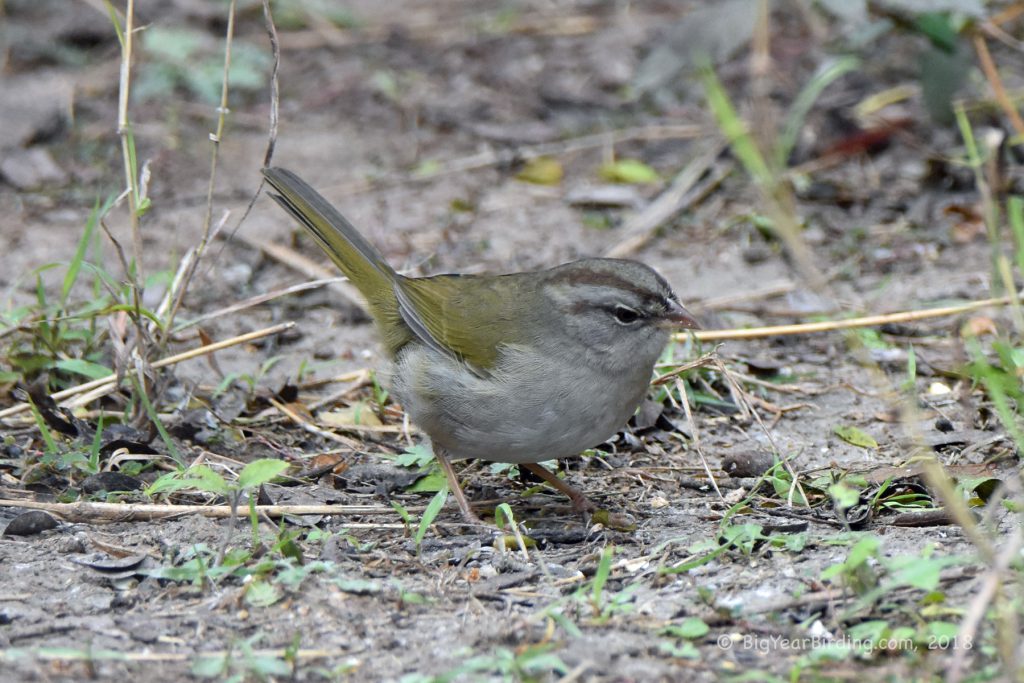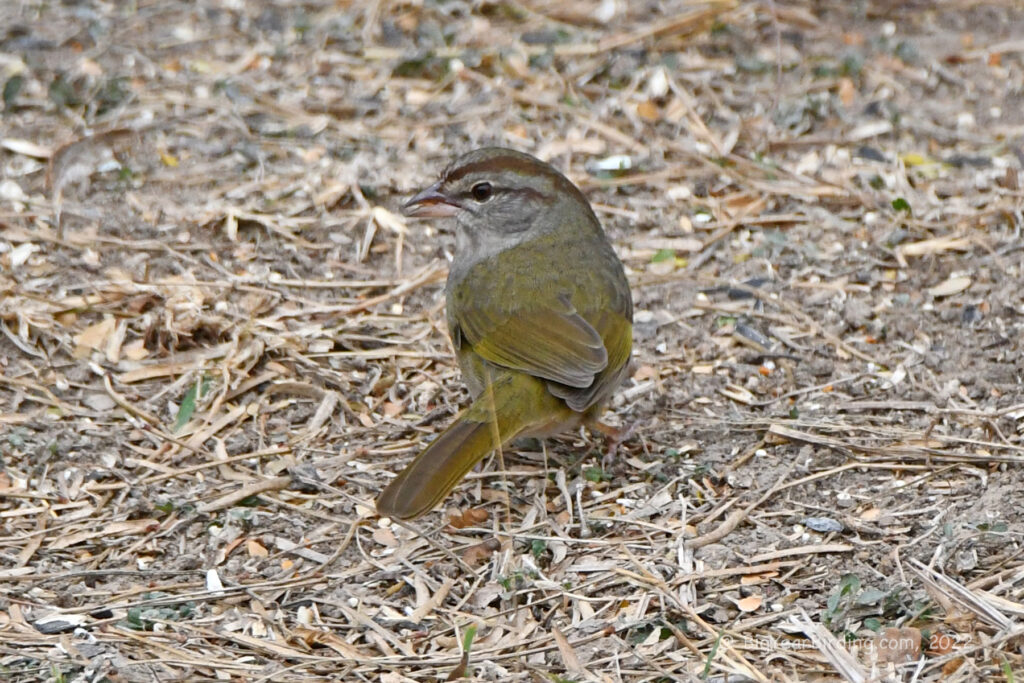
The Olive Sparrow (Arremonops rufivirgatus) is a small, tropical bird that is commonly found in the southern United States, Mexico, and Central America. Measuring between 5.5 and 6.3 inches in length, this species is slightly larger than a House Sparrow, with a wingspan of around 7.9 inches. The Olive Sparrow weighs between 0.6 and 0.7 ounces, making it a very lightweight bird.
The Olive Sparrow is known for its unique coloration, with olive-green upperparts and a distinctive rusty-brown crown and nape. It has a bright, yellow-brown patch above its eye, which is a useful field mark for identification. Additionally, the Olive Sparrow has a pale gray breast and belly, and a long, pointed bill that is adapted for eating seeds and insects. The female of this species is similar in appearance to the male but is slightly duller in coloration.

While some populations of Olive Sparrows are resident year-round, others are migratory, traveling south to Central America during the winter months. In the United States, the Olive Sparrow is found primarily in southern Texas, where it is a year-round resident. However, during the breeding season, the species can also be found in parts of Arizona and New Mexico.
The Olive Sparrow is primarily found in dense, brushy habitats, such as thorn scrub, riparian woodlands, and overgrown fields. It is a secretive bird and can be difficult to observe, often hiding in thick foliage and calling from within the cover. The species is known for its loud, distinctive song, which is a series of clear, whistled notes that descend in pitch.
Despite its relatively small size and inconspicuous behavior, the Olive Sparrow is an important member of its ecosystem, helping to control insect populations and serving as prey for larger birds and mammals. Its unique coloration and beautiful song make it a fascinating species for birdwatchers and nature enthusiasts alike.
